
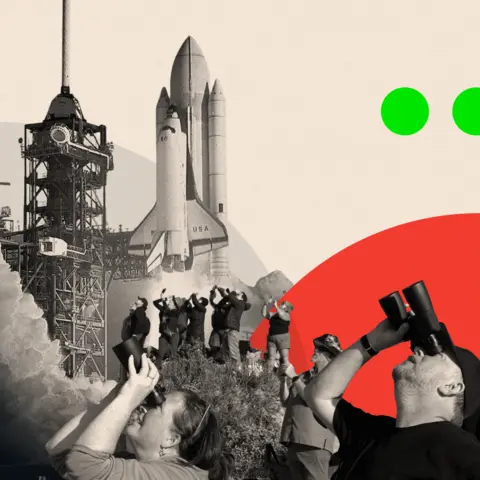 BBC
BBCBillionaire businessman Jared Isaacman has a giant imaginative and prescient for the way forward for humanity.
He set off on his first mission to area in 2021 – a personal journey he paid an estimated $200m (£160m) for – and introduced that he wished area journey to be for the lots, not just for the 600 who’ve skilled it thus far – most of them skilled astronauts employed by Nasa and the rich.
“We wish it to be 600,000,” he advised reporters.
Later, he added: “I drank the Kool-Help by way of the grand ambitions for humankind being a multi-planet species… I feel that all of us wish to stay in a Star Wars, Star Trek world the place individuals are leaping of their spacecraft.”
Mr Isaacman, who made a lot of his $1.9bn (£1.46bn) fortune from a fee processing firm that he based in 1999 aged 16, is claimed to have bankrolled the remainder of the crew of 4 aboard the SpaceX craft within the 2021 mission, fuelled by a longstanding love of flying and fascination with area.
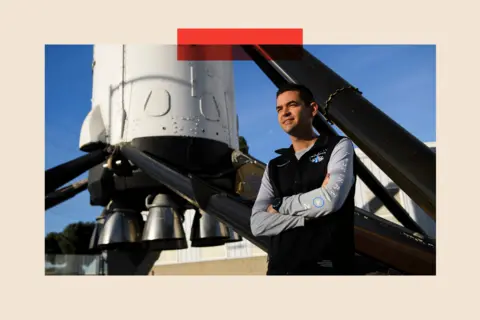 Getty Photographs
Getty PhotographsSince then, there have been extra adventures: final 12 months he demonstrated Captain Kirk-like daring by travelling in an upgraded SpaceX capsule and performing the primary business spacewalk.
Throughout the mission, he examined an experimental spacesuit and a brand new cost-saving protocol to exit and re-enter the spacecraft with out utilizing an airlock.
The {photograph} of Mr Isaacman, silhouetted with the world at his ft, is now iconic – it demonstrated that this was not a playboy billionaire paying to behave out Star Trek, however somebody pushing the envelope of what was attainable with present expertise.
And but it’s a newer achievement that has drawn better consideration nonetheless – being nominated by Donald Trump in December to be the brand new head of Nasa.
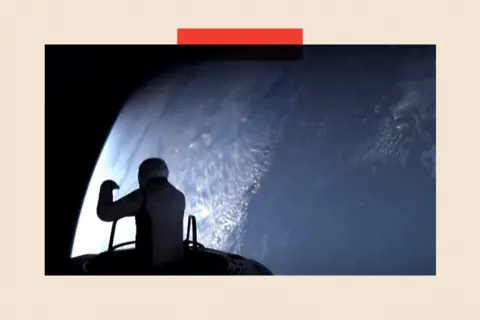 Shutterstock
ShutterstockThe query is why Trump selected him and what has he requested him to do – particularly within the context that the President has appointed SpaceX proprietor Elon Musk to a authorities function to chop $2 trillion (£1.6 trillion) off the Federal funds.
The Nasa submit is a presidential appointment, although it requires the affirmation of the US Senate. And if confirmed, Mr Isaacman’s appointment may even elevate broader questions on the way forward for humanity in area, given his imaginative and prescient for area journey for the lots – but additionally the implications for the area company if Mr Isaacman’s function results in Nasa’s better use of the non-public sector.
Brink of a second area age?
Prior to now, the heads of Nasa have come from quite a lot of backgrounds: some, such because the earlier incumbent Invoice Nelson, have been former astronauts; others, similar to Michael Griffin (in cost from 2005 to 2009) got here from a authorities background, and earlier than him Dan Goldin was an entrepreneur, striving to decrease prices.
Regardless of their disparate backgrounds, those that have led Nasa have all been firm individuals, charged with defending the area company and its values.
And but Mr Isaacman, together with Mr Musk and Amazon’s Jeff Bezos, is amongst a brand new wave of billionaires who’ve been difficult the outdated order in area.
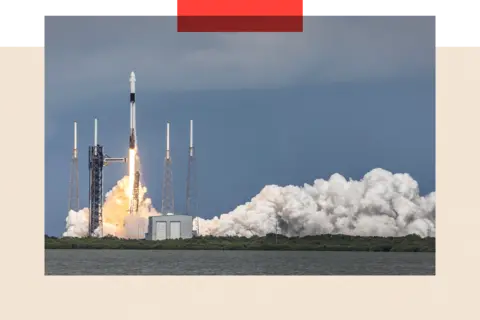 EPA
EPAThey’ve accelerated the tempo of innovation and are aiming to dramatically cut back the price of human area journey.
On the day of his nomination in December, Mr Isaacman posted an announcement on X that gave an early glimpse into his imaginative and prescient. “This second area age has solely simply begun,” he wrote.
“There’ll inevitably be a thriving area economic system – one that can create alternatives for numerous individuals to stay and work in area… At Nasa, we are going to… usher in an period the place humanity turns into a real spacefaring civilisation.”
Many presidents have talked about sending astronauts to the Moon for the reason that finish of the Apollo lunar landings of the Nineteen Sixties and 70s, however Trump was the primary to show discuss into motion, authorising Nasa’s Artemis programme to ship people again to the Moon throughout his first time period. His document suggests that he’s a giant Nasa fan.
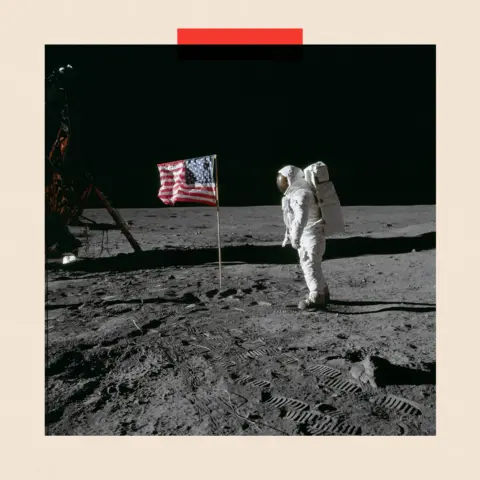 NASA
NASAHowever since then, two elements are more likely to have modified his considering: Nasa’s rocket, the Area Launch System (SLS), has been delayed and prices have spiralled; on the identical time Mr Musk’s SpaceX and Bezos’s Blue Origin are creating reusable low-cost Moon rockets.
That may be a worrying backdrop for Nasa, based on Courtney Stadd of New York-based Past Earth Institute assume tank.
“You will have a authorities seeking to slash,” he stated at a webinar hosted by Area Information. “If you’re the brand new administrator, you’re going in in that context, so you’re going to have to have a look at all the things that may be a drain in your funds…
“This subsequent two years goes to be the equal of a tsunami and all the things is on the desk.”
Way forward for Nasa’s moon rocket
One of many greatest questions is what to do with the area company’s SLS Moon rocket. In 2021, Nasa’s Workplace of Inspector Normal (OIG), which gives oversight of the area company for Congress, reported that the fee was $4.1bn (£3.3bn) for each launch.
Against this, SpaceX’s equal rocket system, Starship, is estimated to value round $100m (£80m) per launch – and Musk has stated he goals to convey the prices down additional to $10m (£8m) as he develops his system.
Bezos’s new Moon rocket, New Glenn, had its maiden take a look at launch initially of January. Blue Origin has not introduced its value per launch, however it’s estimated presently to be round $68m (£54.5m).
Competitors between the 2 billionaires is more likely to velocity up innovation and cut back prices additional.
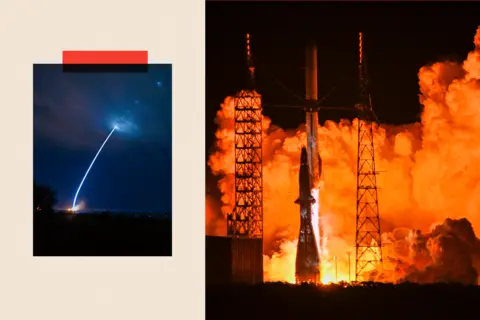 NASA
NASAStarship and New Glenn are projected to be cheaper as a result of, not like SLS, they’re designed to be reusable. However “that is solely part of the rationale for the disparity in prices”, based on Dr Adam Baker, an professional on the area trade at Cranfield College.
“SpaceX is given a sum of cash and contracted to ship on time and on funds,” he continues. “They’re pushed by revenue, and so they wish to minimise prices.
“A Nasa programme is just not pushed by revenue; it’s pushed by the programme targets and so these in cost do not assume they should monitor prices in the identical method.
“There’s a normal acceptance that SLS has no future.”
Questions round spiralling prices
The OIG might solely give you a greatest guess for the total value of the Artemis programme in its assessment for Congress as a result of, because it put it: “Nasa lacks a complete and correct value estimate that accounts for all programme prices.
“As an alternative, the Company’s plan presents a tough estimate that excludes $25bn (£20bn) for key actions”.
Nasa’s mission administration of SLS is just not an aberration – some would say it’s typical. For instance, the James Webb Area Telescope was given a $1bn (£800m) funds and a launch date of 2010 – nevertheless it value ten occasions that quantity and launched in 2021, incomes it the nickname of “the telescope that ate astronomy”.
(Different essential scientific programmes needed to be scaled again, delayed or scrapped completely to make method for the overruns.)
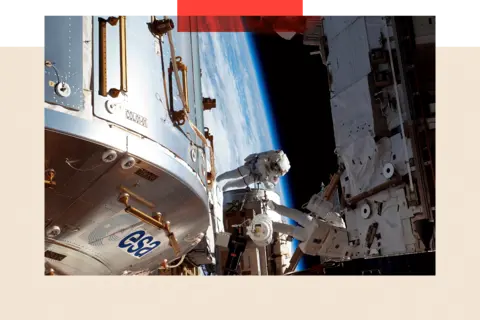 NASA
NASAIt was an analogous story of delays and funds overruns in the course of the growth of the Area Shuttle within the Seventies and the development of the Worldwide Area Station within the 2000s.
Nasa bought away with it as a result of it was answerable for arguably America’s best second when it despatched the primary astronauts to the Moon. The Apollo programme laid the foundations for America’s expertise companies and ushered in a vibrant new period for the US.
However the world has modified considerably since then, and Nasa has merely not stored up, based on Emeritus Prof John Logsdon, former director of the Area coverage Institute at George Washington College. “Altering the way in which the US goes about its civilian area programme is lengthy overdue.”
New gentle on the ‘outdated method of doing issues’
The present mannequin is to present so-called “cost-plus” contracts to large heritage aerospace firms, similar to Lockheed Martin and Boeing, which assure to pay the event prices and an agreed revenue.
The mannequin gave the companies the monetary reassurance they wanted for formidable initiatives such because the area shuttle, the SLS, and creating elements of the Saturn V rocket that took Apollo astronauts to the Moon, however these contracts offered no incentives to chop prices or enhance effectivity. For instance, there have been no penalties for delays or value overruns.
Dr Simeon Barber on the Open College, who has labored with Nasa on robotic area missions, was initially sceptical that the brand new business firms would ship. However he’s now a convert to the brand new method of doing issues.
“We have been used to large initiatives falling not on time and going over funds. However the brand new firms have shone a lightweight on the outdated method of doing issues.”
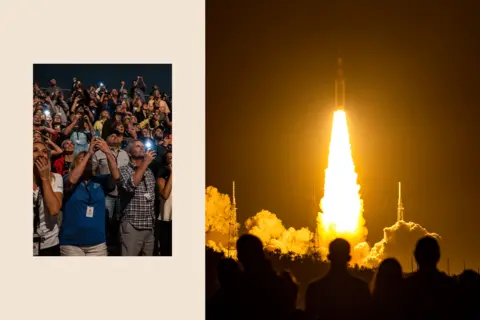 Getty Photographs
Getty PhotographsStrikes to vary what some noticed as an excessively cosy relationship with the heritage area firms gained tempo in 2009 when President Obama launched fixed-price contracts to some non-public sector companies. The businesses got latitude to innovate to chop prices and enhance their income offered they delivered on schedule and on funds.
Amongst these companies was the dynamic new start-up, SpaceX, which was awarded a contract to develop its reusable Falcon rockets and Dragon Area capsule to resupply the Worldwide Area Station with crew and cargo.
The heritage area firm Boeing was additionally given an analogous contract in 2014 to develop its Starliner capsule to do the identical job.
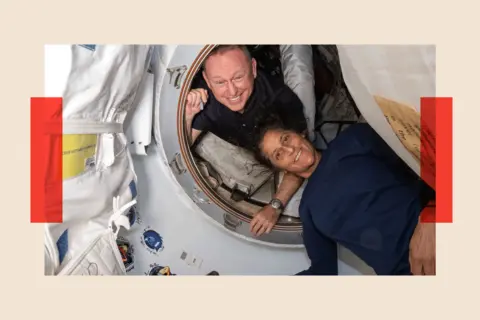 NASA
NASASpaceX, with its riskier however sooner growth processes, started delivering to the ISS inside 4 years of receiving its contract. Against this, Boeing’s Starliner, which had a sequence of delays attributable to technical issues and value overruns, took 10 years – solely to have extra points with a few of its engines, which left astronauts Butch Wilmore and Suni Williams stranded on the area station.
The final word humiliation is that they are going to be introduced again to Earth by rival SpaceX’s Dragon capsule.
“Starliner is a humiliation for the normal method of doing enterprise,” says Prof Logsdon. “So, shaking up the system may be very constructive.”
On the point of a giant shakeup?
Prof Logsdon expects large modifications underneath Trump, Mr Musk and Mr Isaacman: scrapping programmes, closing Nasa centres and extra contracting out to SpaceX, Blue Origin and different non-public sector companies. Mr Isaacman has known as the SLS “outrageously costly” and stated that the main aerospace contractors are “incentivised to be economically inefficient”.
However modifications like that aren’t going to be simple. Nasa’s funds is managed by Congress. Though President Trump’s get together controls each legislative homes, particular person senators and congressmen on the committees that oversee Nasa are from states with jobs and industries depending on Nasa’s $25bn (£20bn) annual funds.
“Get together self-discipline takes second place the place there’s constituency cash concerned,” says Prof Logsdon, a seasoned watcher of the horse buying and selling that goes on with area politics in Congress.
Though Nasa’s initiatives have been costly, they’ve proven us the wonders of the universe and shifted humanity’s notion of ourselves and our place within the cosmos.
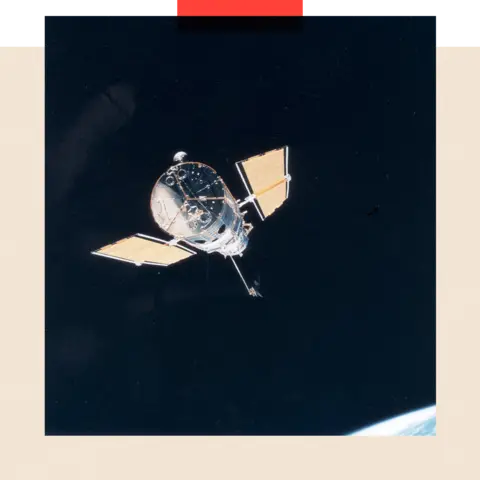 NASA
NASAThe creation of the primary reusable area shuttle, the development of an orbiting area station, the photographs of distant worlds captured by its robotic spacecraft and the awe-inspiring pictures from Hubble have all impressed generations and supercharged curiosity in science. Consequently, senators and congressmen know that America and the world owe Nasa an unpayable debt.
“The outdated method of doing issues gave us quite a lot of success, so you do not wish to throw the child out with the bathwater. There will probably be vital change, however not the novel change that Mr Musk and Mr Isaacman wish to see,” argues Prof Logsdon.
“There’s a delicate steadiness between the pursuits of Nasa, Congress and the White Home.”
The place that steadiness will fall will emerge within the coming months: some are speculating that the return-to-the-Moon programme is perhaps scrapped altogether in favour of going straight to Mars, as President Trump alluded to throughout his inauguration, with the best proponent of that coverage – Musk – seated close by.
Others worry cuts in Nasa’s Earth Statement programmes, which monitor and mannequin environmental modifications from area, and embody the affect of local weather change; and a few fear that the robotic scientific missions to different planets is perhaps in the reduction of to spice up efforts for the human spaceflight programme.
The place SpaceX suits in
There’s concern in some quarters in regards to the shut relationship between Mr Isaacman and Mr Musk. Mr Isaacman paid SpaceX for his two ventures into area. The corporate has already acquired $20bn (£16bn) in contracts from authorities since 2008.
But when SLS is scrapped, and SpaceX have been to obtain the lion’s share of Nasa’s Moon programme work, Mr Musk’s agency stands to obtain contracts that is perhaps ten or perhaps a hundred occasions better, presumably on the expense of different private-sector gamers.
And there are lots of progressive US start-up firms hoping to construct elements for spacecraft and infrastructure in Nasa’s return-to-the-Moon programme, together with Texas-based Firefly, which has a spacecraft on its strategy to land on the Moon in March.
However trade analysts say that the US authorities has an extended custom of breaking apart monopolies in order that they do not stifle innovation. And in any case, simply because Mr Isaacman has labored with Mr Musk, it doesn’t imply that any end result is inevitable, argues Prof Logsdon.
“Isaacman is his personal man,” he provides. “He’s not a disciple of Elon Musk.”
Finally, nevertheless, it has change into painfully clear, even to Nasa’s most ardent supporters, that it wants saving from itself. And the necessity for Nasa reform is just not a partisan challenge – Democrat and Republican presidents alike have set the wheels in movement.
However the coincidental timing of the success of SpaceX, Blue Origin and different private-sector area companies with a brand new administration impatient to chop prices and energise the non-public sector signifies that Mr Isaacman has a novel alternative to make among the greatest modifications to Nasa since its inception.
“Nasa really is a crown jewel, and we aren’t doing what we needs to be doing on behalf of the American individuals,” argued former deputy head of Nasa Lori Garver in the course of the Area Information webinar. “That’s irritating for all of us.”
Requested if a personal sector billionaire was the precise individual to be entrusted with considered one of America’s best nationwide treasures, Ms Garver responded: “Jared is a patriot, and he’s doing this for public service.
“The reality of Jared agreeing has one thing to do with him keen to tackle these exhausting issues – and there are such a lot of exhausting issues”.
High picture credit score: Getty
BBC InDepth is the house on the web site and app for the most effective evaluation, with contemporary views that problem assumptions and deep reporting on the most important problems with the day. And we showcase thought-provoking content material from throughout BBC Sounds and iPlayer too. You’ll be able to ship us your suggestions on the InDepth part by clicking on the button under.

